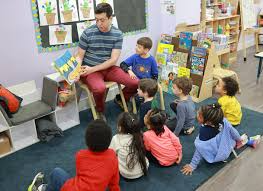Literacy Development Through Animation: Building Language Skills With Animated Stories

In today’s increasingly visual culture, the thoughtful teacher recognizes the potential of diverse media to support children’s literacy development. Among these resources, well-crafted kids animated shows offer particularly rich opportunities for language acquisition and reading readiness. Far from being mere entertainment, these visual narratives provide a scaffold that supports vocabulary expansion, comprehension strategies, and narrative understanding—all essential components of strong literacy development.
The multimodal nature of animated programming creates a uniquely supportive environment for language learning. When children encounter new vocabulary within the context of engaging visuals, clear pronunciation, and meaningful storylines, they absorb language patterns more readily than through decontextualized instruction. This natural language acquisition process mirrors how children learn their first words—through meaningful connections between sounds, images, and experiences.
Research in literacy education consistently demonstrates that exposure to rich language environments contributes significantly to reading readiness. Quality animated programs often feature sophisticated vocabulary, varied sentence structures, and dialogue patterns that extend beyond the typically simplified language children encounter in everyday conversations. This linguistic complexity, when paired with supportive visuals, introduces children to academic language forms they will later encounter in written texts.
The narrative structures prevalent in animated programming directly support story comprehension skills essential for reading. As children follow character motivations, track plot developments, and anticipate resolutions in their favorite shows, they internalize story grammar patterns that transfer to their understanding of written narratives. This familiarity with story architecture provides a foundation for comprehending increasingly complex texts as their reading skills develop.
Phonological awareness—the ability to recognize and manipulate the sounds of spoken language—receives particular support through the songs, rhymes, and wordplay commonly featured in children’s animation. These playful approaches to language draw attention to the sound structures that underpin our alphabetic writing system, preparing children for the phonics instruction that will guide their early reading experiences.
The closed captioning available with most animated content provides another valuable literacy support when thoughtfully incorporated into viewing experiences. Seeing written words synchronized with spoken dialogue creates powerful connections between oral and written language forms. For beginning readers, this pairing of audio and text reinforces sound-symbol relationships while supporting sight word recognition.
Visual literacy skills developed through animated storytelling transfer directly to reading comprehension. Understanding how camera angles, character positioning, color choices, and other visual elements communicate meaning helps children develop the inferencing skills necessary for deep textual comprehension. This visual meaning-making parallels the inferential thinking required when readers must “read between the lines” of written text.
For emerging bilingual students, animated content offers particularly valuable language learning opportunities. The combination of visual context, expressive voice acting, and engaging narratives supports second language acquisition in ways that parallel natural first language development. Teachers working with linguistically diverse classrooms often report that shared viewing experiences create common reference points that support classroom communication across language differences.
The emotional engagement characteristic of animated storytelling also supports literacy development through motivational pathways. When children connect emotionally with animated characters and their journeys, they develop positive associations with narrative experiences. These positive feelings toward stories often transfer to attitudes about reading, addressing the affective dimensions of literacy development alongside skill-building.
Critical literacy—the ability to analyze texts for perspective, bias, and underlying messages—finds natural development through guided viewing of animated content. When teachers facilitate discussions about whose stories are being told, which perspectives are centered or marginalized, and what values are being communicated, children develop analytical tools that transfer to their reading of printed texts and real-world media messages.
The familiar characters and settings from animated programs also provide valuable content for reading and writing extensions. Beginning writers often struggle with generating content, but when invited to create stories featuring beloved animated characters, many children overcome initial reluctance and engage enthusiastically with composition. These entry points to writing practice build confidence and fluency that supports literacy development broadly.
Digital storytelling skills increasingly represent an important dimension of contemporary literacy. When children move from consuming animated narratives to creating their own simple animated stories using accessible digital tools, they develop multimodal composition abilities that integrate traditional literacy with emerging forms of communication. This production-oriented approach transforms passive media consumption into active literacy engagement.
Parents seeking to support literacy development at home often underestimate the value of thoughtfully co-viewing animated content with their children. When adults engage children in conversations about what they’re watching—asking open-ended questions, encouraging predictions, discussing character motivations—they transform entertainment into rich language-building experiences that support reading readiness.
The accessibility of animation for diverse learners represents another significant advantage for literacy instruction. Students with different learning profiles, language backgrounds, and prior knowledge can all engage with the universal language of visual storytelling. This inclusivity ensures that literacy development opportunities reach all students rather than only those who respond well to traditional text-based approaches.
As educational technologies continue evolving, the thoughtful integration of animated content into comprehensive literacy instruction will likely expand. The most effective approaches will balance entertainment value with language-rich content, always guided by the educator’s intentional selection and contextualizing framework that connects animated narratives to broader literacy goals.
In conclusion, the strategic use of children’s animated programming in literacy instruction represents a powerful approach to developing essential language skills. When selected with care and implemented with purpose, these engaging narratives provide valuable opportunities for children to develop the vocabulary, comprehension strategies, and love of stories that will support them in becoming confident, capable readers and writers.